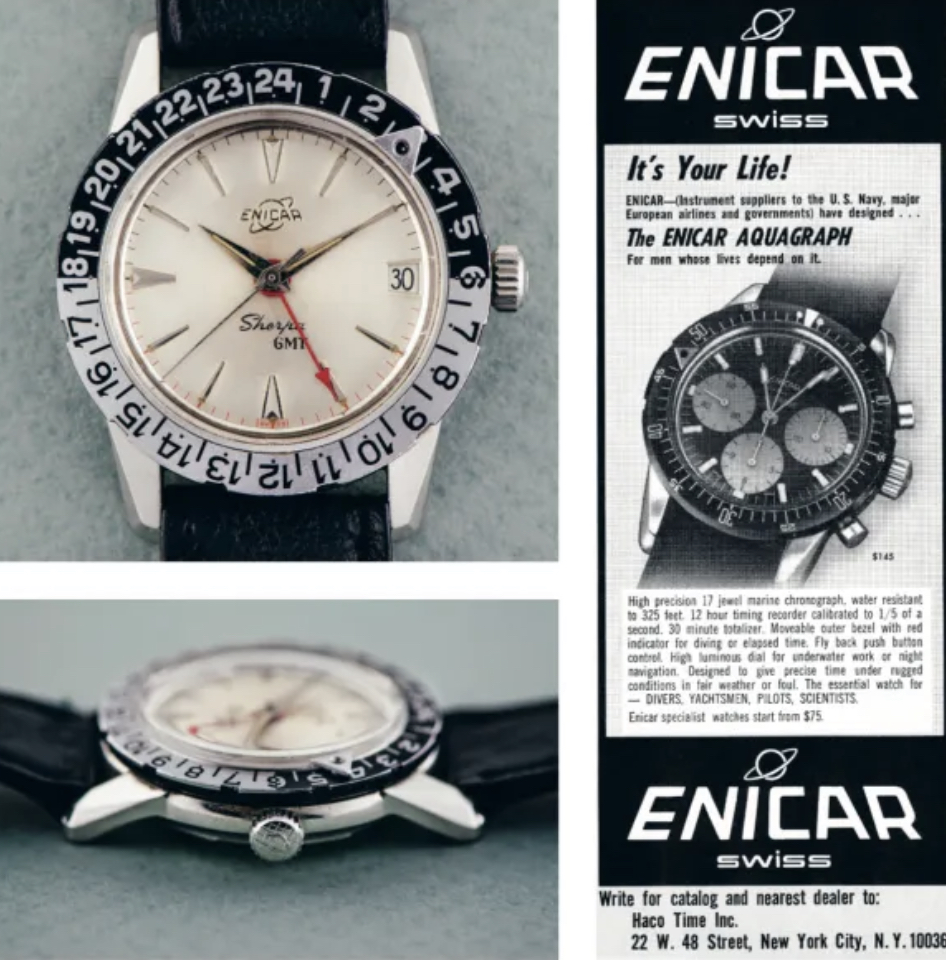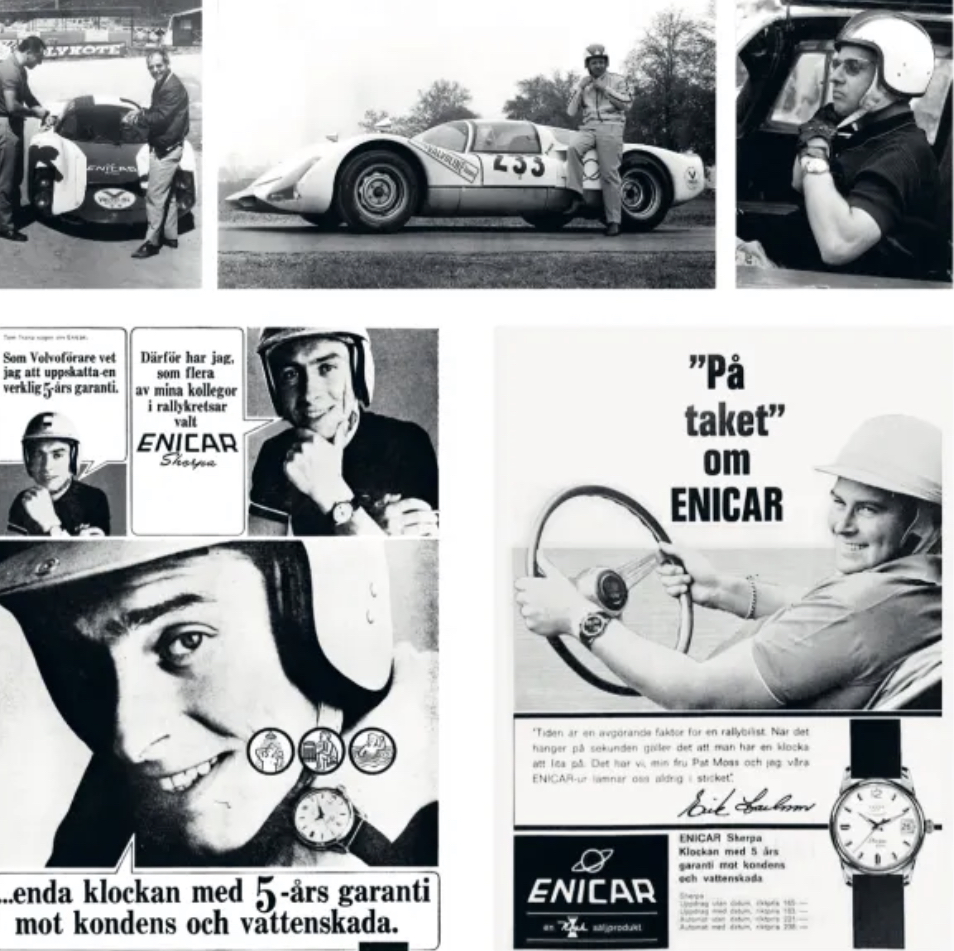By James Ren
Originally published on December 11, 2020
There is a certain fascination to be found in so-called “forgotten” Swiss watch brands. One estimate is that about 1,000 went extinct during the Quartz Crisis from the 1970’s and early 1980’s. The popular brands of today naturally command a premium on the vintage market but many collectors seek value and perhaps the clubby exclusivity found by focusing on lesser known brands. The problem is that when a watch brand went out of business there was generally no thought of preserving records. This book represents a self-published passion project for Martijn van der Ven. The goal is to reconstruct the history of Enicar and introduce some of the collectible models. I reviewed the second printing which includes some additional photos and information.

The book is attractively put together. The photos include high resolution images of important collector’s models as well as reproductions from vintage advertisements and catalogues. There are also many historical photos depicting the working conditions and employees of Enicar. The photography gives life to the story of the brand and could probably comprise a book on its own.
The author emphasizes the use of primary materials with a collector’s obsessiveness. The author personally interviewed a number of people who worked at Enicar. He also received from Ariste R. Racine (whose name backwards is the name of the brand) a wealth of written materials including catalogues and issues of the company magazine. The use of primary materials is fascinating but at times gives the book a certain disjointedness. For example, the first section consists of a very lengthy interview with brand founders Ariste and Emma Racine-Blatt. While there is historically interesting information about the organization and structure of early 20th century Swiss watchmaking operations, it is mostly presented in the stilted diction of a man born in 1889. The format makes the thread of the narrative difficult to follow and the reader is pushed away a bit instead of being drawn in.

The book is on firmer footing when discussing the collectible sports models. As shown by many of the popular watch models today, stories are critical for building excitement and enthusiasm. The well-researched historical material is presented in a narrative that explores the origin and development of the “Sherpa” sports lines, discusses their important features, and goes over the celebrities that have lent their names to certain models. This provides a helpful context and organizational scheme for understanding vintage Enicar sports models.

The author reveals a knack for puncturing the legendary Swiss reserve in his interviews. This is best illustrated by a series of three interviews with a former manager, watchmaker, and Ariste R. Racine himself about the closure of Enicar during the Quartz Crisis. Their recollections form an important historical record illuminating events of that time which were repeated across Switzerland as the watch industry was decimated by new technology and foreign competition. Another interview with a former Enicar authorized dealer provides valuable perspective on the quality and positioning of the brand when it was active.
Overall I enjoyed the book. The author’s passion for the brand is evident throughout. Important historical information about watchmaking is presented through interviews and primary documents that to my knowledge is not available anywhere else. Because the brand is no longer active in the same way, it is discussed with a certain openness and objectivity that is not present in books about current major watch brands. It is an essential historical document for Enicar collectors as well as those who are interested in the history of watchmaking in Switzerland.
